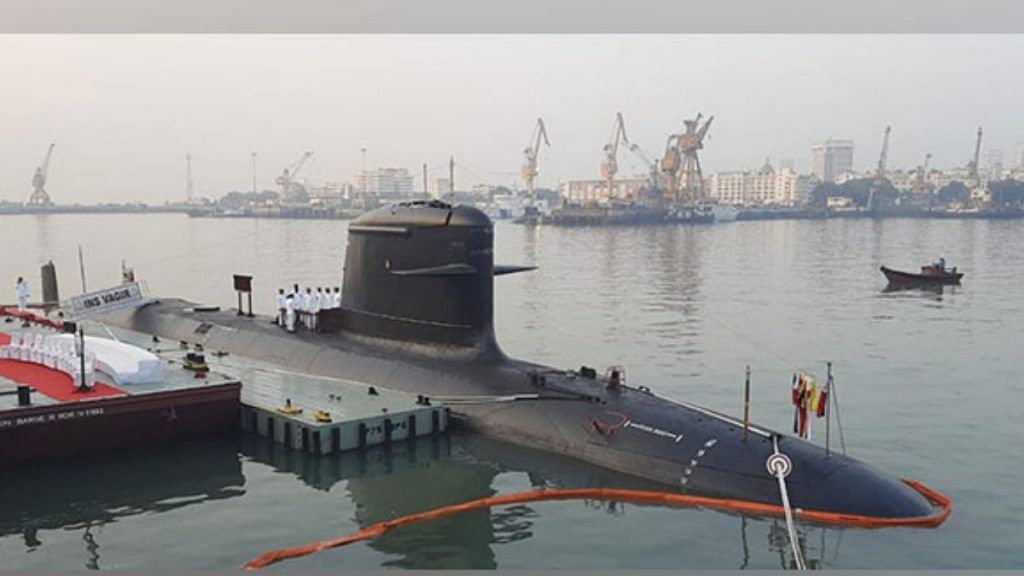New Delhi: The plan to fit the indigenous Air-Independent Propulsion (AIP) system on Scorpene submarines may not work out “soon”, as was envisaged, because the process ahead is quite tedious, ThePrint has learnt.
Sources in the defence and security establishment said all tests conducted so far on the AIP system, which allows a conventional submarine to stay underwater for a longer duration, were part of developmental trials and results are based on the Defence Research and Development Organisation’s (DRDO) own studies.
The DRDO has tied up with Larsen & Toubro and Thermax — its industry partners — to manufacture the AIP system.
Last month, the defence ministry had issued a statement saying that in a major boost to ‘Aatmanirbhar Bharat’, the fuel cell-based AIP system of DRDO’s Naval Materials Research Laboratory (NMRL) “will soon be fitted onboard INS Kalvari”.
According to the sources, INS Kalvari, which was commissioned in 2017, is scheduled to come in for refit only in mid-2024.
This means that even if all trials are completed, the AIP can be fitted onboard the submarine only next year.
“AIP is not a simple ply-and-play system. The hull of the submarine has to be cut and the AIP section added to it. This would mean that the length of the submarine would increase, which brings into play various considerations,” a source said.
A second source added that the AIP system has to be tested at multiple levels to ensure foolproof integration.
As part of the agreement, France’s Naval Group will certify the AIP design for integration in the submarines.
The road ahead will include detailed design certification of the energy module, which will be performed by the NMRL along with Indian industry. The Naval Group will be the lead agency for integrating the AIP with the submarine.
According to the original plan, the last two of the Scorpene-class submarines were to be fitted with indigenous AIP technology at the building stage itself, but late development of the system meant the plan had to be tweaked to ensure AIP fitment during the refit stage.
Also Read: Russia wants to build P75I submarines, says India needs better vessels than Scorpene
Force-multiplier effect
It was in March 2021 that the DRDO completed the first full-fledged test of the AIP system on land.
Sources had then told ThePrint that the endurance mode was for 14 days and max power mode was for two days.
AIP has a force-multiplier effect on the lethality of diesel-electric submarines and the system can even be more silent than a nuclear submarine.
Conventional diesel-electric submarines must surface from time to time, usually every two-four days, to recharge their batteries by using generators driven by air-breathing diesel engines.
However, when it surfaces or uses a snorkel, the submarine is most vulnerable to detection.
With AIP technology now, electricity will be generated while the submarine is operating underwater.
Even though the submarine will still have to surface unlike a nuclear-powered one, the period of submersion will be longer than usual and it can stay underwater for two more weeks.
AIP systems are capable of providing power for recharging the batteries, for propulsion and for other electrical equipment of the submarine.
While AIP systems generally generate power through the reverse electrolysis of oxygen and hydrogen, DRDO’s AIP system functions on phosphoric acid fuel cell technology, which means that no highly inflammable hydrogen has to be stored on board.
(Edited by Nida Fatima Siddiqui)
Also Read: India will be atmanirbhar when state-of-the-art defence systems are developed — DRDO chief
